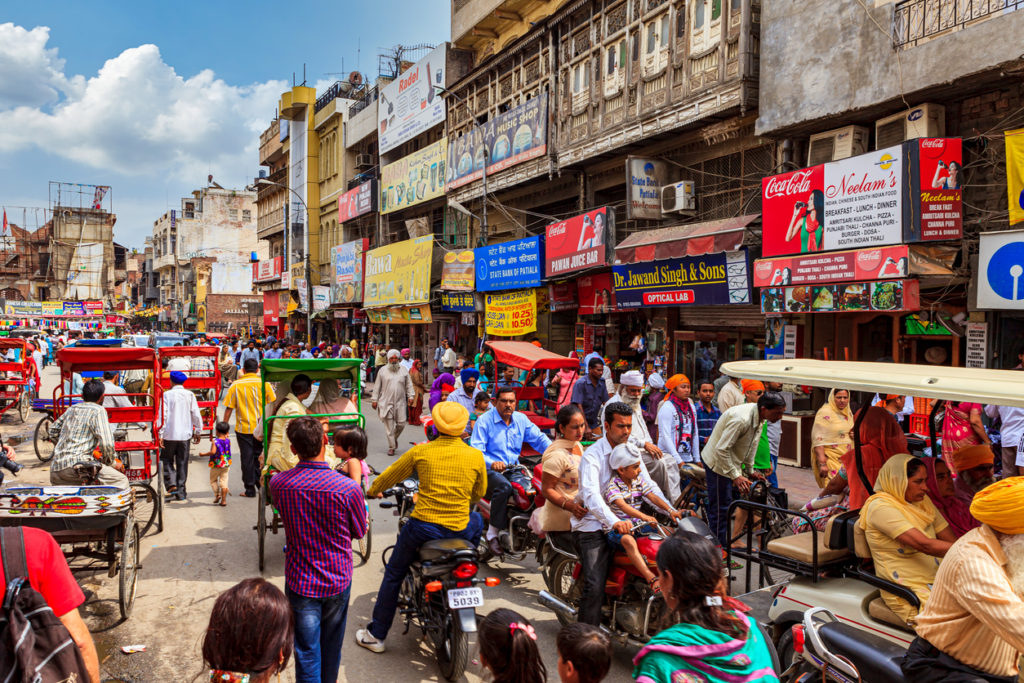New York, July 11 – Despite a deep drop in fertility rates to below 1 per cent in 2020 and after a period of slowest population growth since 1950, the global population is projected to reach 8 billion by mid-November this year and grow to 8.5 billion in 2030, the United Nations said in World Population Prospects 2022.
India and China are the world’s most populous countries with over 1.4 billion each in 2022, but India’s population will surpass that number during 2023, the new report said. It said the rates of population growth vary significantly across countries and regions. India and China accounted for most of the population in Asia in 2022: Eastern and South-Eastern Asia with 2.3 billion people (29 per cent of the global population), and Central and Southern Asia with 2.1 billion (26 per cent).
For more information: https://bit.ly/3Hqihke
The report said more than half of the projected increase in global population up to 2050 will be concentrated in just eight countries: the Democratic Republic of the Congo, Egypt, Ethiopia, India, Nigeria, Pakistan, the Philippines and the United Republic of Tanzania.
Populations of Australia and New Zealand, Northern Africa and Western Asia, and Oceania (excluding Australia and New Zealand) are expected to experience slower growth through the end of the century. The populations of Eastern and South-Eastern Asia, Central and Southern Asia, Latin America and the Caribbean, and Europe and Northern America are projected to reach their peak size and to begin to decline before 2100.
The 46 least developed countries (LDCs) are among the world’s fastest growing. Many are projected to double in population between 2022 and 2050.

Following is a press release from United Nations, Department of Global Communications
World population to reach 8 billion on 15 November 2022
Amid falling growth rates, global population projected to peak around 10.4 billion in the 2080s
New York, 11 July – The global population is projected to reach 8 billion on 15 November 2022, and India is projected to surpass China as the world’s most populous country in 2023, according to World Population Prospects 2022, released today on World Population Day.
“This year’s World Population Day falls during a milestone year, when we anticipate the birth of the Earth’s eight billionth inhabitant. This is an occasion to celebrate our diversity, recognize our common humanity, and marvel at advancements in health that have extended lifespans and dramatically reduced maternal and child mortality rates,” said UN Secretary-General António Guterres. “At the same time, it is a reminder of our shared responsibility to care for our planet and a moment to reflect on where we still fall short of our commitments to one another,” he added.
The global population is growing at its slowest rate since 1950, having fallen under 1 per cent in 2020. The latest projections by the United Nations suggest that the world’s population could grow to around 8.5 billion in 2030 and 9.7 billion in 2050. It is projected to reach a peak of around 10.4 billion people during the 2080s and to remain at that level until 2100.
World Population Prospects 2022 also states that fertility has fallen markedly in recent decades for many countries. Today, two-thirds of the global population lives in a country or area where lifetime fertility is below 2.1 births per woman, roughly the level required for zero growth in the long run for a population with low mortality. The populations of 61 countries or areas are projected to decrease by 1 per cent or more between 2022 and 2050, owing to sustained low levels of fertility and, in some cases, elevated rates of emigration.
More than half of the projected increase in the global population up to 2050 will be concentrated in eight countries: the Democratic Republic of the Congo, Egypt, Ethiopia, India, Nigeria, Pakistan, the Philippines and the United Republic of Tanzania. Countries of sub-Saharan Africa are expected to contribute more than half of the increase anticipated through 2050.
“The relationship between population growth and sustainable development is complex and multidimensional” said Liu Zhenmin, UN Under-Secretary-General for Economic and Social Affairs. “Rapid population growth makes eradicating poverty, combatting hunger and malnutrition, and increasing the coverage of health and education systems more difficult. Conversely, achieving the Sustainable Development Goals, especially those related to health, education and gender equality, will contribute to reducing fertility levels and slowing global population growth.”
In most countries of sub-Saharan Africa, as well as in parts of Asia and Latin America and the Caribbean, the share of population at working age (between 25 and 64 years) has been increasing thanks to recent reductions in fertility. This shift in the age distribution provides a time-bound opportunity for accelerated economic growth per capita, known as the “demographic dividend”. To maximize the potential benefits of a favourable age distribution, countries should invest in the further development of their human capital by ensuring access to health care and quality education at all ages and by promoting opportunities for productive employment and decent work.
The share of global population at ages 65 and above is projected to rise from 10 per cent in 2022 to 16 per cent in 2050. At that point, it is expected that the number of persons aged 65 years or over worldwide will be more than twice the number of children under age 5 and about the same as the number under age 12. Countries with ageing populations should take steps to adapt public programmes to the growing numbers of older persons, including by establishing universal health care and long-term care systems and by improving the sustainability of social security and pension systems.
Global life expectancy at birth reached 72.8 years in 2019, an improvement of almost 9 years since 1990. Further reductions in mortality are projected to result in an average global longevity of around 77.2 years in 2050. Yet in 2021, life expectancy for the least developed countries lagged 7 years behind the global average.
The COVID-19 pandemic has affected all three components of population change. Global life expectancy at birth fell to 71.0 years in 2021. In some countries, successive waves of the pandemic may have produced short-term reductions in numbers of pregnancies and births, while for many other countries, there is little evidence of an impact on fertility levels or trends. The pandemic severely restricted all forms of human mobility, including international migration.
“Further actions by Governments aimed at reducing fertility would have little impact on the pace of population growth between now and mid-century, because of the youthful age structure of today’s global population. Nevertheless, the cumulative effect of lower fertility, if maintained over several decades, could be a more substantial deceleration of global population growth in the second half of the century,” added John Wilmoth, Director of the Population Division of the United Nations Department of Economic and Social Affairs.
For more information, please visit: https://bit.ly/3Hqihke

